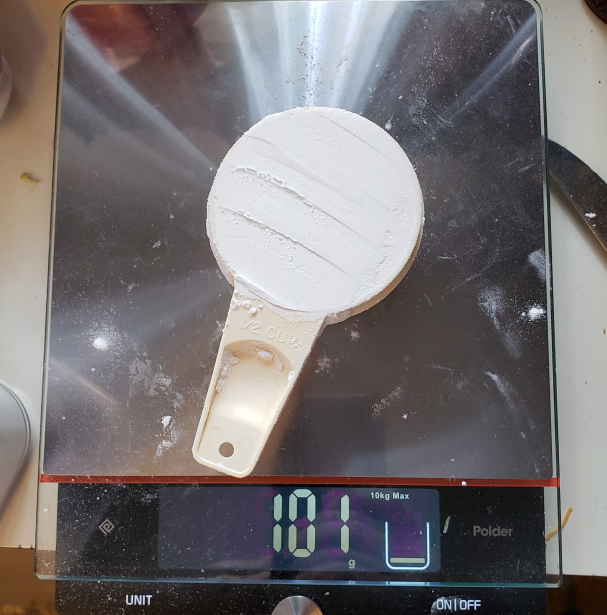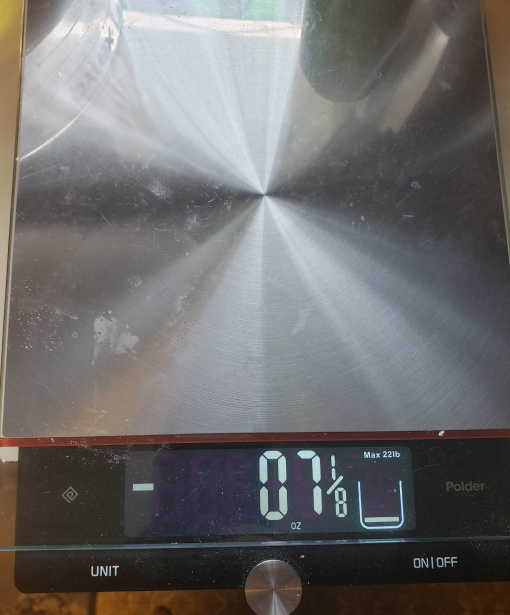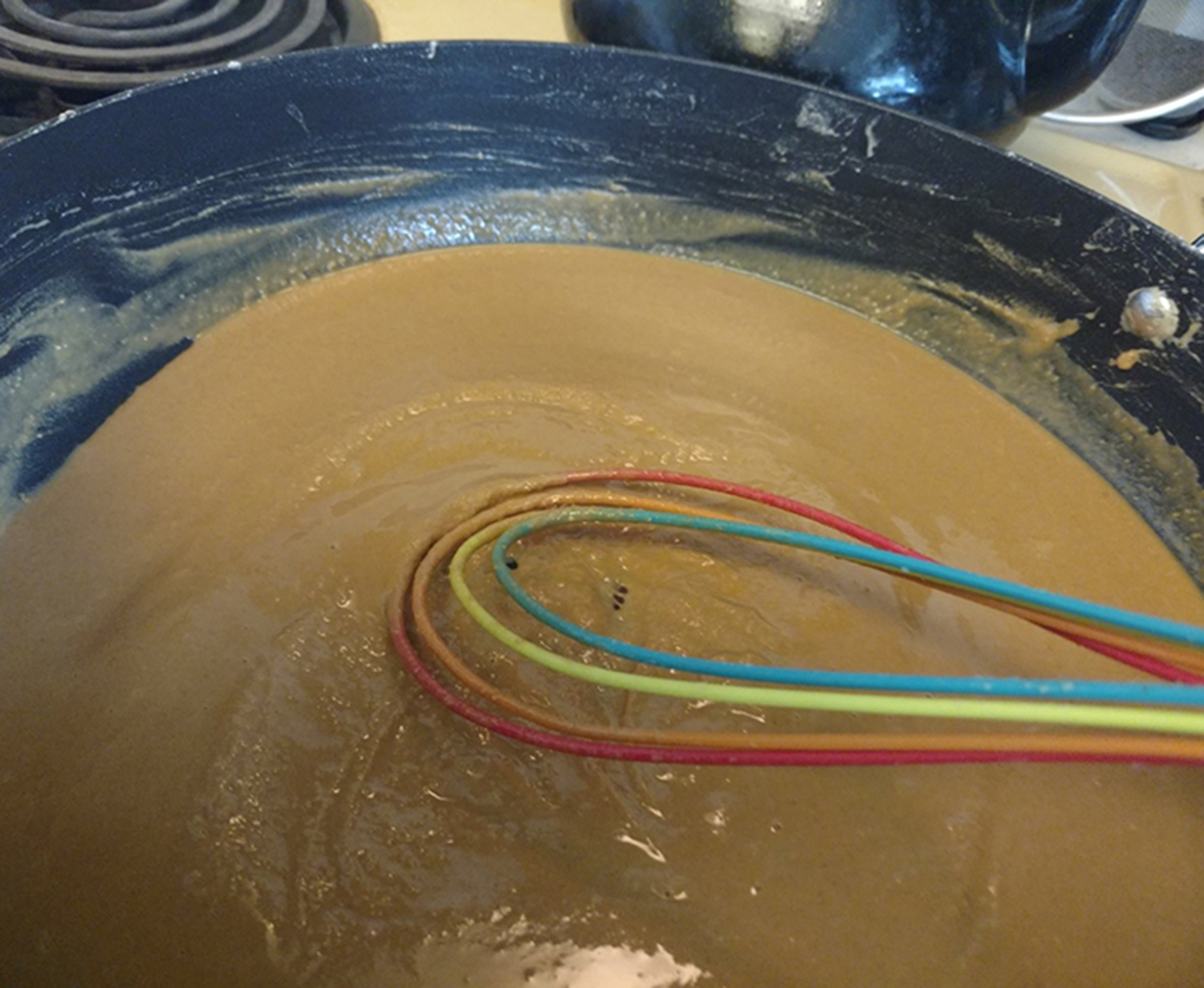QT 97 – Some Baking Basics

Why hello there, and welcome back to Kitchen Catastrophe(s). I’m your mad man with No Plan, Jon O’Guin, and I just ate an entire roll of fruit Mentos, so let’s ride this sugar high till we crash! Today’s topic is a bit of a STRETCH (I don’t know why I emphasized that, I don’t even know if we’ll COVER Kneading today) given Monday’s post, but in all honesty I had nothing else planned, nothing came to me, and so from nothing I must work gold. We’re going to be talking about some baking basics. Specifically, we’re going to discuss Weights, Tare, and Percentages, and maybe some Kneading, if we have time. I don’t know. I am VERY much playing this by ear, and fun fact, I have functionally no formal musical training. So let’s do this!
Aaron Burr knows how to Weight For It
I don’t even HAVE Disney plus to be hyped about that, but fuck it if I’m throwing away my shot to make some timely Hamilton puns. Sometimes, you just feel so Helpless as a blogger, like History Has Its Eyes On You, and you’ll never be Satisfied with the work you do, so you go crazy and… and…fuck…is Eliza’s other song just titled “Burn”, or is it “Let it Burn”? Welp, I guess that’s the end of that streak.
Not. Yet.
The important thing here to talk about why you should stop using measuring cups in your baking. This is a pretty basic maxim of professional chefs/cooks, so if this is the first time you’re hearing about it, let me DEMONSTRATE why people say to do so. Cooking is, at its fundamentals, a matter of ratios, so being consistent in your ratios is important. So if you just scoop one half cup of flour in the 1/2 cup itself and level it off with knife, you get
Dalmatians?
But, if you spoon your flour into your cup, and level it off with a knife, you get
16 grams less. Hell, you can SEE the the difference.
Those two recipes are going to produce very different doughs, because they’re notably different amounts of flour. (Hopefully. I am writing this BEFORE doing the scoops, because I had the idea to illustrate it after I started the post, so I really hope they’re not like, 6 grams different. 10? I legitimately don’t know how many grams are in a half-cup, so I don’t know what would be a big difference. 10 grams would be a HUGE difference if it’s like, 50 grams, and a “not great, but not terrible” difference if it’s 100… Uhh…Let me work it out. 16 ounces is like…450 grams or something… since water is 1:1, fluid ounces and …so 225 in a cup? 112.5 in a half cup? That’d be for WATER, and flour is lighter…I don’t know. Without knowing the density of flour, none of this meant anything and YOU will already know better than I do how different the numbers are, and roughly what the number is, so I don’t know why I’m still writing this bit. )
This is particularly important for the percentages, as we’ll get into later. But FIRST, we have to talk about the go-to tool for bakers that you’ve already seen twice: the Scale! Since using weights is more accurate, it’s generally considered a good idea to use a scale of some kind when measuring for recipes. Nowadays, at least. Back before you had easy kitchen scales, people made do, so understand that it’s not WRONG to make a recipe purely off of volume measurements, just that there will be a little wider range of results. Scales are more of a “I want to get this RIGHT”/ “mid-range” production tools, since if you’re just making stuff for your family, they’re going to be more forgiving if one batch is off, and if you’re working in semi-industrial quantities, you’re probably working off of like “I will used this entire 25 pound bag of flour”, and you shoot past the utility for scales. But for a home chef looking to improve their baking game, or someone working in relatively small-scale production, scales are great.
And one of their most useful features is our next topic!
It’s Tare-ing Up My Heart
I can feel the sugar high collapsing, so we gotta go fast if we’re going to get this hammered out in time. Alright, “tare” is a fun word whose pronunciation fits exactly into the above pun, and it means…well, it means a couple things, including a Biblical weed, but the important thing for our current function is that it means “minus” or “lacking”, and it’s a term used in weighing things. Specifically, it’s “how much a vessel weighs when it’s empty”. You might see it on like, a shipping container, “2,000 lb tare weight”. That means that the container weighs 2,000 pounds when it’s empty, so when you weigh the full container, you know that whatever’s inside is “The number I’m currently seeing, minus 2,000”.
This is very useful for baking, because most modern scales have a “tare” function, where you can re-set the scale to count whatever weight is currently on it as “0”.
One day, I will actually LOOK at my pictures before writing the lead-up to the picture I THINK I took. THIS pic has the bowl already tared out, and is just measuring flour but YOU can’t see that, because I’m bad at fitting pieces together.
Take the bowl off, and suddenly your house is full of HELIUM.
You’re not just nothing, you’re LESS than nothing. (though the minus for the negative being all the way to the left is a little weird)
Put a different bowl on, and…oh, hey, it looks like this set isn’t perfectly consistent.
A QUARTER OF AN OUNCE? UNACCEPTABLE.
(That might actually be a matter of placement: our scale was like, $20, and can wobble a bit depending on where you place things. GOOD scales sit in the $40-50 range, so they’re not prohibitively expensive, and a $20-30 one will be fine for most people)
Anyway, this allows you to add your ingredients while looking at the specific weight of them as they go in. and you can KEEP tareing out the scale with each ingredient added! Why is that useful? I’m Glad you asked, rhetorical Jon.
Keeping it 100. Or like, 87-88?
The “last” thing I really wanted to cover today are what’s called Baker’s percentages, which are NOT 130%. Well, actually, they KIND of are. Baker’s percentages refer to a kind of intentionally ‘wrong’ percentages, from a mathematical sense, that are much more useful and a little more intuitive.
And yes, this means basically all of today’s post was planned to be Math. I don’t apologize. You wanna end up like the Harry Potter kids? No mathematically training after age 11, unless you ABUSE TIME TRAVEL to take Arithmancy, which almost certainly doesn’t have REAL math in it.
A plan so bad the tools had to be destroyed off-screen in a later book.
So the thing is, that Baker’s percentages work the way you probably THINK percentages work. And that’s only slightly an insult, but more an acknowledgement that it’s very easy to forget a facet of how they work. Let’s say you had 400 grams of sugar, and you wanted to have a mixture that was 10% salt. You add 40 grams of salt, and boom, you’re done, right?
No, you’re not, as my mathematician brother would be happy to point out (though honestly, the odds are like 1:5 he READS this. He takes the “I back the site on Patreon, I don’t have to care about the posts” mentality, which is an impressively Medici mentality. “Look, I pay for the art, I don’t care to SEE it.”)
Either this was a painting made with the expectation that the subject would never see it, or THIS was the most “normal” you could make Lorenzo Medici look.
As you might have worked out during that extensive aside, 40 grams is not 10% of the FINAL MIXTURE’s weight, which is 440. It’s 9.1 percent (well, 9.0909 ad infinitum), because adding the next ingredient changes the denominator as you add. It’s easier to see with bigger ratios/smaller starting points. If you add 60 grams of sugar to 100 grams of flour, the 160 gram new mixture is 37.5% sugar, not 60%.
Baker’s Percentages, luckily DO work that way, since they’re based on the initial weight of flour that you use. So if you have a dough whose “baker’s math” is 60% hydration, 4% sugar, 2% Salt, 2% yeast, and 4% fat, then for every 100 grams of flour, you use 60 grams of water, 4 grams of sugar, 2 grams of salt, 2 grams of yeast, and 4 grams of fat.
I wanted to get a generic body-builder as an example of “4% fat”, but it turns out that famed awesome dude Terry Crews is apparently roughly 4%, so of course we’re featuring him.
So while measuring out your ingredients, you can handle the math of each step as its own thing: do 200 grams of flour, set to 0. Add the yeast…4 grams, set to 0, etc etc.
Now, of course, not every recipe will be kind enough to give you the precise percentages, so this trick is more useful when working from more precise cookbooks/recipes…or if you want to scale up a recipe, and convert an existing one.
Let’s take…this one, from AllRecipes. 6.5 cups flour, 3.5 cups water, 3 tablespoons lard, 1 tablespoon salt, 3 tablespoons sugar, and 2 packages of instant yeast. Now, let’s do some kitchen math to make that all roughly the same, aiming for…tablespoons, since that will probably get us closer to percentages: let’s see, each packet of dry yeast is about 2.25 teaspoons, so that’s 4.5 teaspoons, or 1.5 tablespoons. One cup is 16 tablespoons, so that’s…damn, 104 tablespoons flour, 56 tablespoons water. And if we cheat and trim off those 4 tablespoons of flour, boom, you’ve got percentages: 56% warm water, 3% softened lard (oil), 1% salt, 3% sugar, and 1.5% yeast. That’s a recipe you can scale. The original makes 2 loaves, but with this, you can double it, triple, whatever. You’ve got the numbers, you know how to weigh, nothing’s going to stop your baking today.
That rhyme was the last burst of sugar-speed, by the way, so I think this is a good place to call it for the day. We’ve all learned a lot. Well, I haven’t, I only learned that an entire tube of Mentos is only 140 calories. But that’s SOMETHING. Join us next week when…I…Am less…sleepy.
MONDAY: JON HITS UP ENGLAND FOR A DRINK, AND MAYBE A QUICK BITE. BUT DEFINITELY THE DRINK.
THURSDAY: LOOK, WE’RE LUCKY HE COMMITTED TO A PLAN FOR MONDAY.














